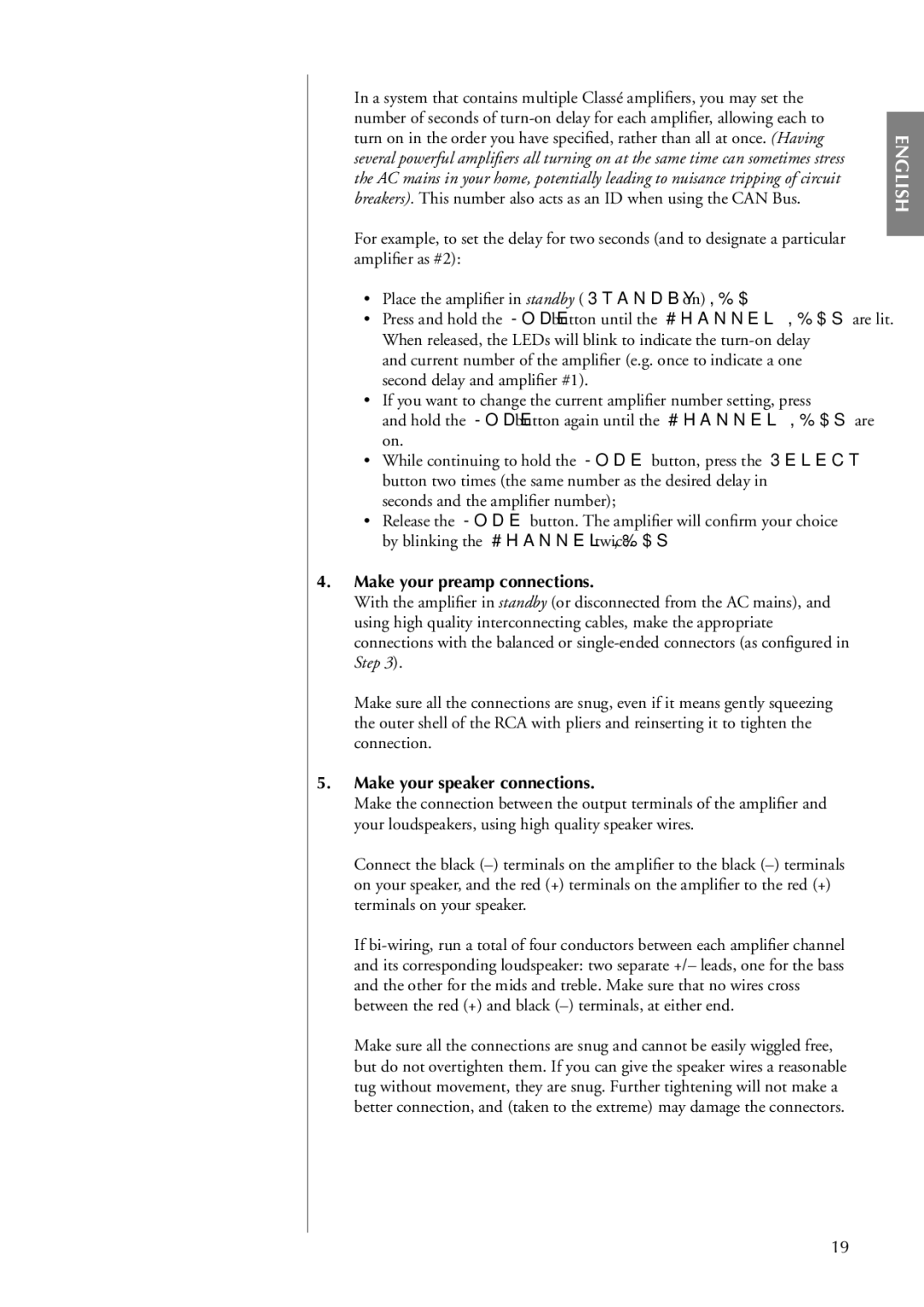CA-5100 specifications
The Classe Audio CA-5100 is a high-performance power amplifier designed to deliver exceptional sound quality and reliability for audiophiles and music enthusiasts. Renowned for its robust build and superior audio performance, the CA-5100 is part of Classe's tenured lineage of premium audio equipment, making it a standout choice for both hi-fi home systems and professional audio setups.One of the main features of the CA-5100 is its power output. With a total output of 100 watts per channel into 8 ohms, this amplifier can drive a wide range of speakers, making it versatile for various audio environments. When operating at 4 ohms, the power output rises to an impressive 200 watts per channel, ensuring that it can handle demanding speaker loads without compromising sound quality.
The CA-5100 employs Class A/B amplification design, which is known for its balance between sound fidelity and efficiency. This technology allows for low distortion and high power efficiency, resulting in a warm and natural sound that audiophiles crave. The dual-mono architecture of the amplifier ensures that each channel operates independently, providing excellent channel separation and reducing crosstalk for a more immersive listening experience.
One of the notable characteristics of the Classe Audio CA-5100 is its premium construction. It features a heavy-duty chassis that minimizes vibrations and interferences, allowing for cleaner signal transmission. Additionally, high-quality components, such as oversized transformers and large filter capacitors, contribute to its high current delivery capability, ensuring robust performance even at high volumes.
The amplifier is equipped with proprietary technologies, including advanced thermal management systems, which dissipate heat effectively to maintain optimal performance and longevity. The CA-5100 also includes various input options to accommodate different audio sources, such as balanced XLR and unbalanced RCA inputs, ensuring compatibility with a wide range of audio devices.
In conclusion, the Classe Audio CA-5100 embodies high-end audio engineering principles, offering exceptional sound reproduction, robust power handling, and a build quality that reflects Classe's commitment to excellence. Whether used in a dedicated listening room or as part of a professional audio system, the CA-5100 stands as a testament to what high-performance amplifiers can achieve, delivering an unforgettable auditory experience for any listener.

